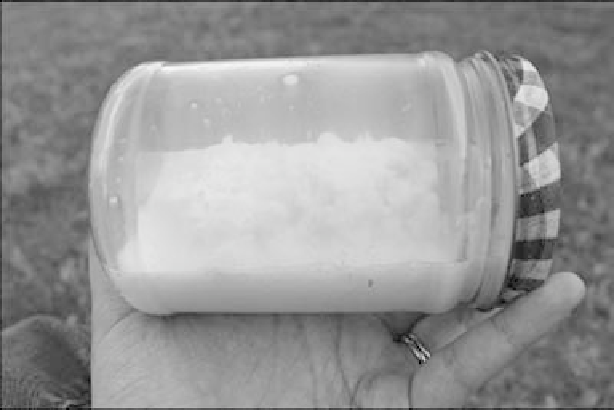Agriculture Reference
In-Depth Information
Butter separates from the buttermilk as it nears completion.
(Photo courtesy of Brannan Sirratt)
Pour the butter into a fine colander, let the buttermilk drain out into another container, and set
it aside. This cultured milk has lots of health benefits as well, so you don't want it to go to waste.
Rinse the butter that is left in the colander with cold water until it runs clear, and then move it to a
bowl. Salt it to taste, and work the butter around to get the water out. Some buttermilk and water
may remain, and that's okay.
Put your butter in a container, or jazz it up with some herbs, such as chives or rosemary, and garlic
first. Back into the fridge it goes, though you can leave it out a bit to get it soft and spreadable.
Butter from Goat's Milk
If you are making your butter from goat's milk, you will find that the separation stage is not
so simple. Even after a few days, the cream still might not have risen to the top. Goats make
incredibly rich milk for their babies, which is good for the baby goats but not so good for the goat-
milking, butter-making humans. If you can get your hands on a separator, you can separate the
cream right after milking. Separators can be purchased for about $200 to $300 through mail-order
supply stores.
If you do manage to get some goat milk cream and culture it, the next step is to heat the cream
in a double boiler. As soon as it hits 146°F, cool it to the 50°F to 60°F range by setting the pan in
cool water. It's now ready to be churned, a process that will likely take around half an hour. After
churning it to pea-sized granules, pour off the liquid milk that is left to be used elsewhere, and
pour in fresh water. Churn a bit more, drain, and refill. Do this a few times until your rinse water
is clear.













